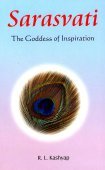Pannatti, Paññatti, Paṇṇatti: 5 definitions
Introduction:
Pannatti means something in Buddhism, Pali, Jainism, Prakrit, Tamil. If you want to know the exact meaning, history, etymology or English translation of this term then check out the descriptions on this page. Add your comment or reference to a book if you want to contribute to this summary article.
In Buddhism
Theravada (major branch of Buddhism)
Source: Dhamma Dana: Pali English GlossaryF (Designation, term of calling). That which is conventional.
Source: Pali Kanon: Introducing Buddhist Abhidhammapannatti: 'conventional' or 'relative' truth; which means: 'concepts, ideas, notions, names or terms'.
There are several groups of Pannatti:
- Santhana pannatti are concepts of form, like land, mountains, etc.
- Samuha pannatti are collective concepts, corresponding to a collection or group of things, like chariot, table.
- Disa pannatti refer to concepts of locality.
- Kala pannatti refer to concepts of time.
- akasa pannatti refer to space, like caves, wells.
- Nimitta pannatti refer to conceptualized images, visualized images.
Theravāda is a major branch of Buddhism having the the Pali canon (tipitaka) as their canonical literature, which includes the vinaya-pitaka (monastic rules), the sutta-pitaka (Buddhist sermons) and the abhidhamma-pitaka (philosophy and psychology).
Languages of India and abroad
Pali-English dictionary
Source: BuddhaSasana: Concise Pali-English Dictionarypaññatti : (f.) designation; name; concept; idea; a regulation.
-- or --
paṇṇatti : (f.) designation; name; concept; idea; a regulation.
Source: Sutta: The Pali Text Society's Pali-English DictionaryPaññatti, (f.) (fr. paññāpeti, cp. paññatta1) making known, manifestation, description, designation, name, idea, notion, concept. On term see Cpd. 3 sq. , 198, 199; Kvu translation 1; Dhs. translation 340.—M. III, 68; S. III, 71; IV, 38 (māra°), 39 (satta°, dukkha°, loka°); A. II, 17; V, 190; Ps. II, 171, 176; Pug. 1; Dhs. I, 309; Nett 1 sq. , 38, 188; KhA 102, 107; DA. I, 139; SnA 445, 470; PvA. 200. The spelling also occurs as paṇṇatti, e.g. at J. II, 65 (°vahāra); Miln. 173 (loka°); KhA 28; adj. paṇṇattika (q. v.). (Page 390)
— or —
Paṇṇatti, see paññatti. (Page 404)

Pali is the language of the Tipiṭaka, which is the sacred canon of Theravāda Buddhism and contains much of the Buddha’s speech. Closeley related to Sanskrit, both languages are used interchangeably between religions.
Prakrit-English dictionary
Source: DDSA: Paia-sadda-mahannavo; a comprehensive Prakrit Hindi dictionary1) Paṇṇatti (पण्णत्ति) in the Prakrit language is related to the Sanskrit word: Prajñapti.
2) Paṇṇatti (पण्णत्ति) also relates to the Sanskrit word: Prajñapti.
Prakrit is an ancient language closely associated with both Pali and Sanskrit. Jain literature is often composed in this language or sub-dialects, such as the Agamas and their commentaries which are written in Ardhamagadhi and Maharashtri Prakrit. The earliest extant texts can be dated to as early as the 4th century BCE although core portions might be older.
See also (Relevant definitions)
Starts with: Pannatti Sila, Pannatti Sutta, Pannattivada, Paṇṇattika.
Ends with: Anupannatti, Bhikkhapannatti, Candapannatti, Lokapannatti, Puggalapannatti, Suyapannatti, Tiloyapannatti, Upanidhapannatti.
Full-text (+4): Prajnapti, Anupannatti, Pannatti Sutta, Abhinibbida, Paṇṇattika, Bhikkhapannatti, Khuddaka, Adhivacana, Agraprajnapti, Cetiyavada, Vajja, Sangiti Sutta, Shila, Shankha, Gotta, Pudgala, Arammana, Puggala, Maya, Ayatana.
Relevant text
Search found 25 books and stories containing Pannatti, Paññatti, Paṇṇatti; (plurals include: Pannattis, Paññattis, Paṇṇattis). You can also click to the full overview containing English textual excerpts. Below are direct links for the most relevant articles:
Patthana Dhamma (by Htoo Naing)
A Manual of Abhidhamma (by Nārada Thera)
Paññatti < [Chapter VIII - The Compendium Of Relations]
Summary of Objects < [Chapter III - Miscellaneous Section]
Formless-Sphere Consciousness < [Chapter I - Different Types of Consciousness]
Visuddhimagga (the pah of purification) (by Ñāṇamoli Bhikkhu)
Note regarding paññatti (concept) < [Chapter VIII - Other Recollections as Meditation Subjects]
(7) Mindfulness of Death < [Chapter VIII - Other Recollections as Meditation Subjects]
Trends in the Development of Theravāda Doctrine < [Introduction]
Abhidhamma in Daily Life (by Nina Van Gorkom)
Introducing Buddhist Abhidhamma (by Kyaw Min, U)
Chapter 1 - Preliminaries < [Part 1 - Abhidhamma]
Appendix III - The Abhidhamma < [Book III]
Chapter 6 - Right Understanding < [Part 2 - Meditation]
Part II - The Suttanta Pairs Of Terms < [Book III - The Division Entitled 'elimination']
Related products
